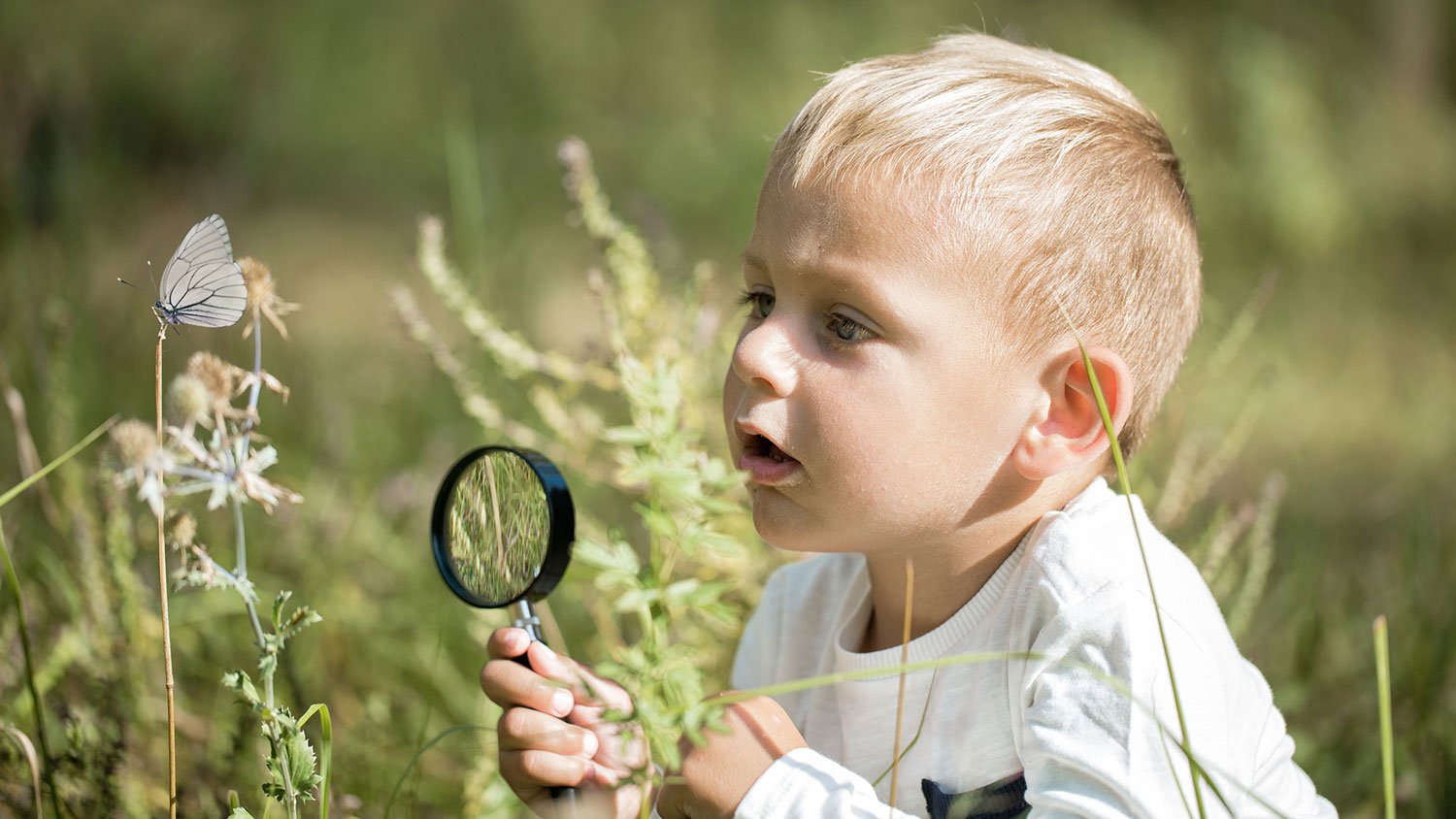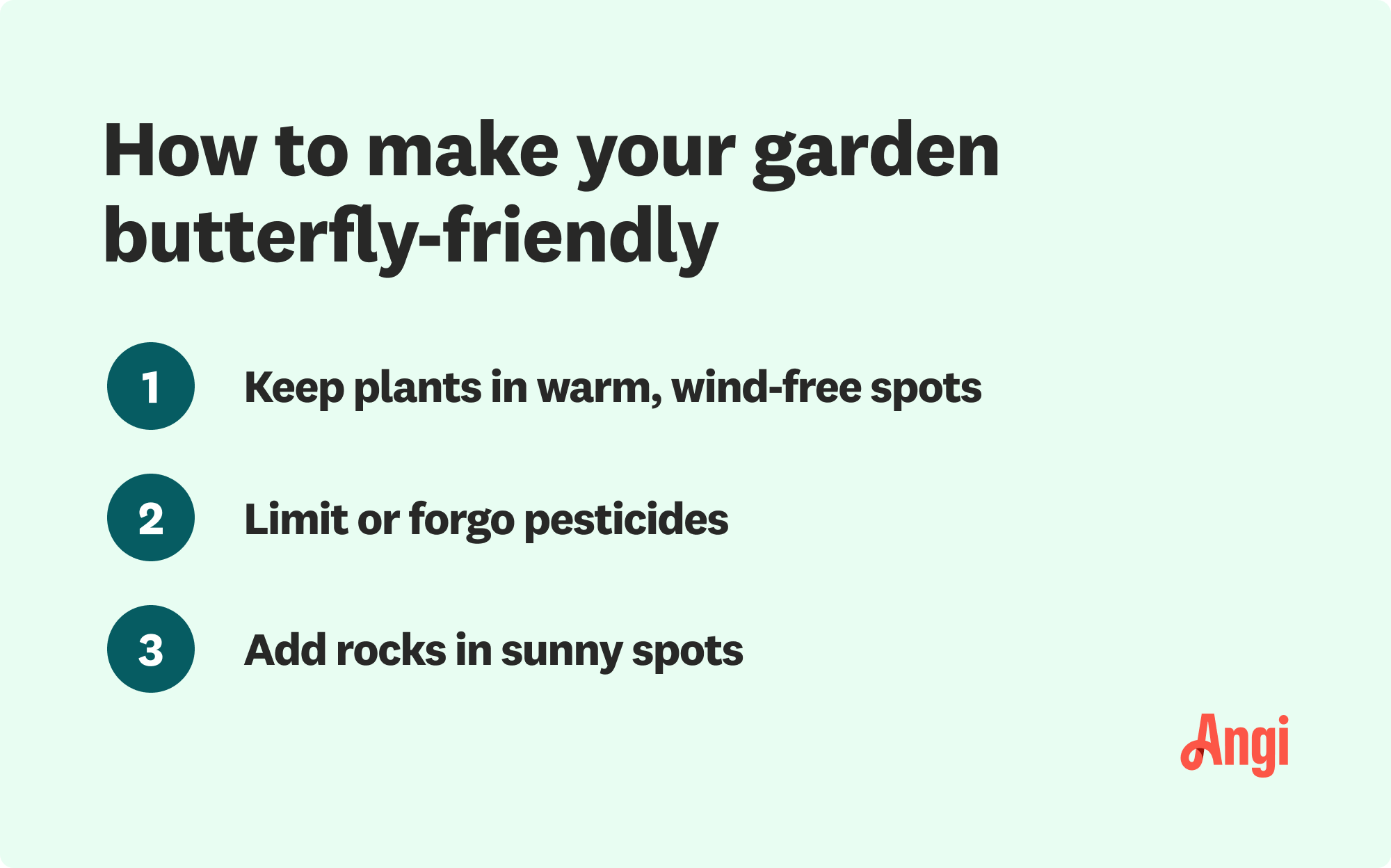The Big Benefits of Butterflies in Your Garden (and How to Attract Them)
Colorful critters with a big role to play


Highlights
Butterflies can help pollinate plants
Winged insects indicate a healthy ecosystem
Keep your yard pesticide-free
Plant native flora for both caterpillars and adults
With vibrant wings that look like stained glass, butterflies are always a marvelous sight to behold, whether they are migrating and merely passing through or local longtime residents.
But these winged critters are more than eye candy—they offer benefits for your garden’s plants and the larger ecosystem. Read on to learn why it’s important to attract butterflies to your garden and how to do it.
Why Butterflies Are Good for Your Garden
Butterflies are beneficial to your garden—and the wider ecosystem—in numerous ways.
Pollination
Butterflies are pollinators, helping plants to reproduce. The adults feed on plant nectar, and in the process, get pollen on their bodies, which they carry over to other plants to start the reproduction cycle. Bees, wasps, moths, and beetles are a few other pollinators; some plants don’t even need insects, relying on wind or water to bring them pollen.
Ecological Benefits
Beyond plant reproduction, butterflies are an indication of a healthy ecosystem. A thriving garden that attracts butterflies will attract other helpful critters, such as bees and birds, as well as other insects that can provide natural pest control, like ladybugs.
In addition, butterflies are an important member of the food chain, sometimes becoming dinner for spiders, lizards, mice, and other creatures. In turn, they help plants and many other living things survive.
Educational Value
If you have kids, butterflies are wonderful little teachers. Their metamorphosis from egg to caterpillar to chrysalis and finally to adult butterfly shows children the lifecycle of one of nature’s most important (and beautiful!) insects.
Little ones might also want to learn about butterfly migration, which is most famously done by Monarch butterflies, but other species—such as Common Buckeye, Skipper, Sachem, and American Lady—do it as well.
Many butterflies from Mexico and southern states fly north during the warmer months to populate these regions, and vice versa for those from northern areas. Seeking out warmer weather helps migratory butterflies to find the flower nectar they need to survive.
Gardening for Butterflies

Butterflies love flowers, so a garden rich in flowering plants is key to attracting butterflies and helping them on their migratory routes. Here are some other considerations.
Sunshine- and Wind-Free
Butterflies are cold-blooded and rely on the sun’s warmth for energy. Plant your butterfly-friendly plants in a warm spot, with wind coverings—wind makes for less than ideal conditions for butterflies.
Limit or Forgo Pesticides
Keep your butterfly garden organic and limit your use of insecticides and herbicides, which can kill helpful insects in addition to the harmful ones. In addition, herbicides can poison caterpillars and destroy their food sources. Look for all-natural solutions to pest and weed control.
Add Garden Enhancements
A few accessories or enhancements in your garden will encourage butterflies to hang out there. Rocks in sunny spots will give butterflies a landing pad to bask in the sun, and wet sand or mud is appealing to butterflies while courting; males give female butterflies mud or wet sand during mating.

Host and Nectar Plants to Grow in Your Garden
For your garden to have a thriving butterfly population, plant both host plants for caterpillars and nectar plants for full-grown butterfly adults. Look for plants that are native to your area, which you can check by searching on the Audubon Society’s website.
Here’s a look at plants that attract pollinators, but if you need help creating your butterfly-friendly garden, hire a local gardener.
Host Plants for Common Caterpillar Species
| Great Spangled Fritillary | Violets |
| Pipevine Swallowtail | Pipevines |
| Eastern Tiger Swallowtail | Black Cherry, Tulip Tree, Sweet Bay Magnolia |
| Red-Spotted Purple | Black Cherry, Willows, Deerberry |
| Tawny Emperor | American Hackberry |
| American Painted Lady | Cudweed, Everlast |
| Monarch | Milkweed |
| Henry's Elfin | Redbud, Yaupon Holly, Blueberries |
| Great Purple Hairstreak | Mistletoe |
| Gray Comma | Gooseberry, Azalea, Elm |
| Joe-Pye weed | Perennial, zones 4-9 |
| Ironweed | Perennial, zones 3-9 |
| Yellow coneflower | Perennial, zones 3-9 |
| Goldenrod | Perennial, zones 3-9 |
| Asters | Perennial, zones 3, 6, 7 and 8 |
| Blueberry bushes | Perennial, zones 3-9 (varies by species) |
| Milkweed | Perennial, zones 3-9 |
| Lilac | Perennial, zones 2-7 |
| Hollyhock | Perennial, zones 3-8 |
| Snapdragon | Perennial, but usually grown as an annual, zones 7-11 |

